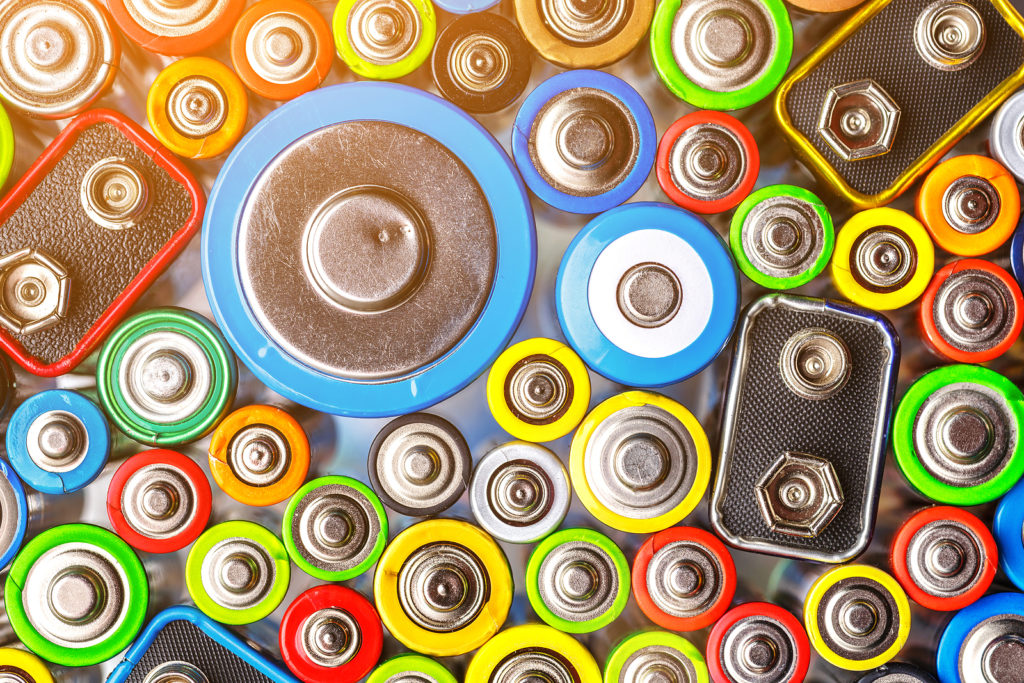
Are Rechargeable Batteries Really Worth It?
Guest Post by Sex Coach Lex
As a professional sex geek, you probably have more than a little experience with rechargeable batteries in your equipment. But what about the rechargeable batteries in your… well… equipment?
TL;DR — just take me to the answer!
Hello, my fellow professional sex geeks! Lex here again.
Are you someone who runs your own retreats, conferences, or workshops? Have you decided it would be fiscally wiser to own your own equipment for these events instead of renting or hiring every time? If so, I bet you’ve got a whole set of wireless microphones and other equipment that require batteries (maybe some wireless lights, professional cameras, etc…). Have you been keeping track of how often you have to buy new, disposable batteries for those items (also known as alkaline batteries)? For many of us, batteries are one of those “small” expenses that we don’t keep track of because it doesn’t seem like it will impact us in the long run. But you’d be surprised just how fast (and high!) those costs can add up.
That’s why now might be a good time to consider switching to rechargeable batteries. Not only will you be saving money but you’ll be helping the environment. The materials used inside of batteries can be toxic to the environment, especially if they aren’t handled correctly. So reducing the amount of batteries we use overall can have a huge, positive impact.
Environment aside, saving money is always handy as a small business owner. Annnnnnd, there are a few things worth knowing before looking at the numbers. For the sake of this article, I’m focusing on AA batteries because that is what Reid uses in his microphones for Sex Geek Summer Camp and Sex Geek Conservatory, and these are what he’s considering replacing (Hence this article, since I researched this topic so Reid could make a more informed choice).
If you are considering replacing C, D, and 9-volt batteries, most – if not all – of what is written here will apply to them as well.
The 3 Types of Rechargeable Batteries
The first thing to know is that there are 3 types of rechargeable batteries NiCd (Nickel-Cadmium), NiMH (Nickel-Metal Hydride), and Li-ion (Lithium Ion).
NiCd (Nickel-Cadmium)
NiCd (Nickel-Cadmium) batteries are now considered an older technology. These were the ones you had to completely discharge in order to keep them working well. You are unlikely to run into them these days so I won’t spend more time on them.
NiMH (Nickel-Metal Hydride)

NiMH (Nickel-Metal Hydride) have replaced NiCd batteries. These batteries generally have about 500 discharge cycles (that means they can be charged 500 times before beginning to lose capacity for how long they will stay charged). You also don’t have to worry about discharging them all they way to keep them working right. In fact, some people recommend recharging them at about 30%, and I will second that advice. One thing to watch out for is self-discharge. NiMH batteries slowly discharge even when not used. Some as much as 1% per week. This is why rechargeable batteries are the best for low-draw devices and devices that can go as much as 30 days without use. However, today’s high-quality NiMH batteries have a Low Self-Discharge and can hold between 70-85% of their charge for over a year!
It’s also important to note that NiMH can be damaged or cause damage if left in a charger for too long after they are fully charged. Especially, if you surpass more than 24 hours. Thankfully, many of today’s chargers have technology that recognizes when a battery has reached a full charge and automatically stop charging it at that point. Still, you shouldn’t leave batteries in a charger for too long after they are done charging.
Li-ion (Lithium Ion)
Li-ion (Lithium Ion) batteries are even more powerful than NiMH but have a number of drawbacks for our uses. Contemporary Li-ion AA batteries can be cycled as much as 4000-5000 times. They have a stronger charge than NiMH which comes in handy, particularly with lighting equipment. They are also lighter and can generally hold a larger capacity (longer charge) than NiMH batteries. A huge advantage of Li-ion is that they will hold their charge for a very long time regardless of whether they are in use regularly or not. However, they are also significantly more expensive than NiMH batteries.
Use The Right Charger For The Job

It’s important to note that each type of rechargeable battery requires an appropriate charger for that battery type. While you can use a mix of Li-ion and NiMH batteries in a device to power it… when it comes to recharging them, Li-ion batteries can only be charged with a Li-ion charger and NiMH batteries need a NiMH charger.
When In Doubt, Go With NiMH AA Batteries
I will be focusing the rest of this article on NiMH AA batteries for several reasons. From my research, they seem to be the commonly chosen battery amongst industry professionals for microphones and audio equipment in particular. Plus they are more affordable. Also, lithium batteries have several environmental and ethical issues surrounding them. While Li-ion are more powerful and will last longer, once they can no longer be used, there isn’t currently a way to truly recycle them. The metals inside can be toxic if they leach out, and the batteries can catch fire. It’s also my personal opinion that lithium may be reaching its peak and some other batteries will be taking their place. Unfortunately, with the pace of scientific improvement in battery technology that might not be for another 10 to 15 years, but that is a rabbit hole for another time.
Show Me the Money!
It’s time to get down to the dollars and cents! (All the following numbers are accurate for the time of the publication of this article in January 2023).

If you buy the very cheapest disposable batteries (also known as alkaline batteries). You can find them for about $30 for 100 batteries (you get what you pay for with these batteries. The better ones that you should actually buy are about 3 times as expensive). That works out to about 30¢ per battery.
The cheapest rechargeable NiMH batteries are about $12 for 8 batteries or $1.50 per battery. And the price gets lower if you buy more.
The cheapest Li-ion batteries are about $38 for 8 batteries or about $4.75 per battery.
Both of these may seem like a much larger investment than regular alkaline batteries, but that’s where the magic of math comes in. Remember what I said about cycling?

At about 500 cycles a NiMH battery that costs $1.50 is equivalent to $150 worth of disposable batteries at 30¢ each. That’s $148.50 of savings per battery!
At about 4000 cycles a Li-ion battery that costs $4.75 is equivalent to $1200 worth of disposable batteries at 30¢ each. That’s $1195.25 of savings per battery!
These numbers don’t even include the fact that you may be able to use the batteries for many more cycles before they won’t hold a charge at all. I will admit, however, that these are the figures for cheapest recharable batteries and not the batteries I’m actually going to recommend to you. The better the battery, the great the savings when you do the math…
The industry standard battery and one of the two I’ll be recommending is about $3 per battery. A high-quality disposable battery of the same capacity costs about 90¢. So at 500 cycles, the $3 NiMH battery I recommend is equivalent to $450 worth of comparable disposable batteries. For a total savings of $447 per battery.
Rechargeable Battery chargers are where things can actually get expensive. Chargers range from $14 to nearly $200. And there is a case to be made where the more expensive chargers justify their cost. However, for our relatively simple purposes as sex educators running workshops and filming content at home or on the road, the chargers I recommend are mostly under $30.
What Brands are We Looking At?
As for the actual suggestions, the most recommended brand is Eneloop Standard rechargeable batteries from Panasonic (not the Eneloop pro). But here is a little secret. IKEA’s LADDA batteries are actually the same Eneloop batteries under a different label. So if you have access to an IKEA, you can purchase the LADDA batteries for about 27% cheaper.
I also recommend the Eneloop fast charger if you are going the Eneloop route. Remember that while you can’t mix NiMH and Li-ion batteries, you can use any charger built for NiMH with any brand of NiMH batteries. The most basic chargers take as much as 8 hours to charge 4 batteries. Whereas as fast chargers can do the same work in about 2 hours, but “fast chargers” that hold 8 batteries or more will still take approximately 8 hours to bring everything up to a full charge. Keep this in mind when planning how many batteries to buy. Also keep in mind that rechargable batteries run for about 6 hours of continuous use, so if you are running an all-day retreat with a morning and afternoon session, you’ll probably want to replace your batteries once in the day and when the day ends or in the morning (Reid swaps batteries at lunch and then at the end of the day so the batteries are fresh and ready to go in the morning).
Some good brands for chargers include Eneloop, Tenergy, and Powerowl are recommended brands.
For those of you that believe in the old adage of “you get what you pay for,” feel free to look into the Ansmann and Powerex brands. These are both highly recommended for their batteries but even more so for their battery chargers which are much more expensive.
What To Choose? What To Choose?!?
So you now know that you could be saving thousands of dollars over 3-5 years by switching to rechargeable AA and AAA batteries for your wireless microphones and other devices. But which one’s to get?

If you are at this point and you want to move forward but you are scared about committing to a new product, are overwhelmed by the thought of buying things from multiple places (cue Reid’s hamsters), or you are on a really tight budget, then these are my suggestions:
If you have access to IKEA I suggest getting 4 LADDA rechargeable batteries with the accompanying charger that includes another 4 batteries. This gets you to one slow but safe charger and 8 batteries for just about $26 (plus taxes).
If you don’t have access to IKEA try this bundle for the Eneloop Quick Charger with 8 batteries for $40.98.
Those are my starter suggestions.
If you know you use more than 8 batteries in a day, take the number of batteries you need to use at one time and multiply it by 2. This should give you enough batteries to be able to rotate what you’ve been using with fresh batteries and recharge the ones you just took out. Remember that you can only recharge as many batteries as you have space for, so you might need to get an extra charger to make the rotation/recharging smooth and easy. (It’s a huge pain to try and keep track of which batteries are recharged and which still need to be recharged… I recommend trying to set things up such that you can recharge what you just used all at once.)
Chargers I Recommend

Here are a couple of other charger suggestions if you need to charge more than 4 batteries at a time.
This 8-bay charger from Tenergy with LCD display.
This 16-bay charger from Powerowl.
And just for fun for you real battery fiends, here is battery charger that can charge 40 Batteries at once!
I hope that helps you on your journey to a more efficient and sand slightly more environmentally friendly business.
P.S. – For those that are committed to rechargeable batteries. I went ahead and did a little more research on the more expensive brands, and landed on this charger with all the bells and whistles from Powerex:
https://mahaenergy.com/mh-c980/
P.P.S. – None of the suggestions are affiliates and there was no sponsorship for this article.
